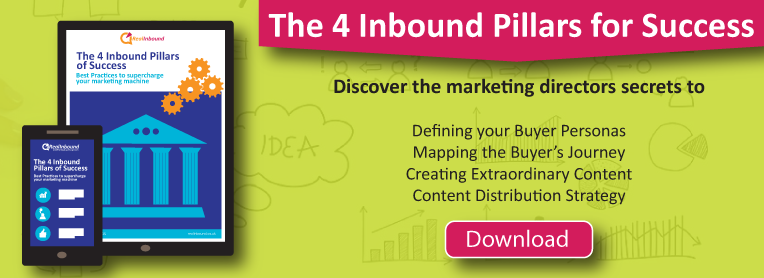Unqualified leads are a thorn in the side of digital marketers every day. It's a constant battle to try to weed out the bad leads and find the good ones. Often, it feels like all our efforts are going into trash.
The problem with unqualified leads is that they can waste a lot of time and resources. They can also be frustrating because it's hard to determine why they're even on your list in the first place. Was it a bad download? A mis-click? A case of mistaken identity?
It's important to remember that not all unqualified leads are created equal. There are some that are simply uninterested, and there are others that are actively hostile. The latter can be particularly dangerous, as they can leave negative reviews or spread false information about your brand.
The best way to deal with unqualified leads is to be proactive about it. Set up filters and segmentation so that you can quickly identify and remove them from your list. And, most importantly, don't take it personally. They're not rejecting you, they're just not a good fit for what you're selling.
This is where Account-based marketing can come to the rescue. Account-based marketing (ABM) is a targeted selling approach that involves selling directly to your target market. This can be accomplished by aligning your marketing and sales teams. This is mutually beneficial for both parties.
Account-based marketing is an intriguing concept, but what exactly does it mean? What sets it apart from inbound marketing? Most importantly, how do you go about it?
What Is Account-Based Marketing?
Account-based marketing is a strategic approach to marketing that is focused on key accounts rather than on individual leads. This approach is designed to create long-term relationships with key decision-makers in target accounts and to generate new business opportunities within those accounts.
In order to be successful with account-based marketing, organisations need to have a deep understanding of their target accounts and the key decision-makers within those accounts. They also need to align their marketing and sales efforts to focus on these key accounts.
Account-based marketing can be an extremely effective way to grow a business, by building strong relationships with key decision-makers and generating new business opportunities.
How Does ABM Avoid Unqualified Leads?
ABM allows you to avoid unqualified leads by targeting only the accounts that are most likely to convert. This approach is especially effective for B2B companies that sell complex products or services. By focusing your marketing efforts on a smaller number of high-value accounts, you can better nurture relationships and close more deals.
ABM is a more targeted and personalised approach to marketing, and it can be extremely effective in generating new business. If you're looking to avoid unqualified leads and focus your marketing efforts on high-value accounts, account-based marketing may be the right approach for you.
Implementing ABM with HubSpot
If you're looking for account-based marketing software that can help you run effective ABM campaigns with ease, HubSpot's software is a great option. It provides all the tools and features you need to create targeted campaigns, track and measure results, and optimise your efforts for maximum ROI. Plus, it's easy to use and integrates seamlessly with HubSpot's other marketing and sales tools.
The following are some of the reasons why HubSpot is a leading ABM platform:
Simple Strategy Setup:
Workflow templates, standard attributes, and AI-powered guidelines make it easy to set up your ABM strategy. With a robust CRM to underscore everything, your strategy will be easier to implement, more intuitive, and faster than ever before.
Milestone Measurements:
Use HubSpot’s milestone tracking feature to get a detailed understanding of each account's journey or get a high-level view with out-of-the-box reporting dashboards.
Cross collaboration:
Marketing and sales teams can use shared tools to access the same data, which allows them to collaborate and support your high-value target accounts. Having this type of transparency between departments helps to foster a healthy working relationship and eliminates any unnecessary tension
Develop A Deep Relationship Through Personalised Engagement:
HubSpot’s account-based marketing tools allow you to deliver personalised content and experiences that are tailored to how you engage with each stakeholder within an account. The properties - for instance the account review sidebar, ABM playbook, help you intensify relationships with your customers in time and keep them coming back for more.
ABM Set-Up Guide

If you're looking for a comprehensive guide for setting up an account-based marketing campaign using HubSpot's platform, you've come to the right place. I'll break down the process into easy steps so that you can make the most out of HubSpot's unique suite of tools.
- Set Up Your ABM Tools
Either you need to be a "Super Admin”, or you need to have "Account access" permissions to activate these features. Alternatively, if you are already there:
- Go to Contacts > Target Accounts
- Now click the Get Started button
By doing so, you'll be redirected to your target account's homepage.
- Update your ABM info
The default properties used in the ABM Dashboard and its reports, ABM lists, target accounts home, and the account overview are mentioned below.
Contact Properties
Buying Role:
Selling is a process, and each contact plays a specific role in that process. One contact can have multiple roles, and they may also share the same role with another contact. You can edit this property to add new buying roles, but you can't delete the default values.
Company Properties
Target Account:
The target account is a key component of your ABM strategy and is a single checkbox property. To identify a company as a target account in HubSpot, you can update the company record’s Target account property value to True. Doing so will help you focus your marketing and sales efforts on the companies that are most likely to do business with you.
Ideal Customer Profile Tier:
The three tiers of ideal customer profile represent how closely a company matches your ideal customer profile. Tier 1 businesses ought to be your top priority and Tier 3 may be on the low priority and borderline suitable aspect. Additionally, you can edit this property to match your business strategy.
- Updating ABM Properties with Workflows
The organise organisations by ideal customer profit fit' workflow template in HubSpot is designed as an ABM example. It demonstrates how you can assign a tier value to a company based on its annual revenue value.
Creating a company workflow can be achieved by using this template. The steps are as follows:
- Visit Automation > Workflows in HubSpot
- Click the Create workflow button in the upper right corner
- Click the Templates tab in the left panel
- Click the Type dropdown menu to select Companies
- Choose the kind businesses by ideal customer profile template to demonstrate an ABM workflow
Once you have a customer profile in mind, you can tailor the offer to fit their Needs.
- Identify Specific Accounts to Target
You should have access to your target accounts' homes at this stage. HubSpot has provided a list of companies that would be good possible accounts for you to target.
Creating a contact list and a company list
After you've activated your ABM features in HubSpot, your account will automatically generate contact lists for you based on company and contact ABM properties. You can locate these lists in the Account Based Advertising list folder.
This kind of list helps you segment your contacts for ads, marketing emails, and also for customising your website with smart content for all contacts:
- an Influencer
- a Champion
- a Budget Holder
- a Decision-Marker
- As a buyer
These lists provide you with a way to segment your contacts and use them for advertising, marketing emails, and for customising your website with intelligent content.
Besides these, company lists can also be created for further targeting.
- Engaging Your Target Audience
Viewing your target accounts
Keep track of your target account by exploring their home and viewing their activity. This will help you not only keep track of your progress with them but also give insight as to whether or not they're worth pursuing as a target. Sales and marketing members can both review target account activity and help identify new accounts together.
Identify your target accounts using the account overview
If you have a HubSpot Sales Pro or Enterprise seat, you can see the Account overview for a business record in your target accounts home, on the right panel of a company record, and in Salesforce. Adding the HubSpot Visualforce window to Salesforce and installing the Salesforce-HubSpot integration will enable you to view the overview.
You can see the following information on the overview dashboard:
- Associated activities
- Associated contacts
- HubSpot users who have created or participated in HubSpot-related activities.
- Associated deals
- Tracked page views by related contacts
Working with target accounts with your playbooks
The ABM playbooks are a great way to get started with account-based selling. You can pick the default template that best fits your sales strategy and then customise it to fit your business. Having this playbook will provide your team members with guidance when they speak to prospects or even work with contacts or deals.
Does it integrate?
HubSpot's Slack integration is a powerful tool that allows you to push data and call data right from HubSpot. This includes actions such as:
- Easily share notes on Slack
- Slack command /hs-report-company will provide metrics on a target account.
- HubSpot workflows allow you to create Slack channels for deals and companies
- Analyse Your Target Accounts Using Reports
HubSpot is a powerful marketing tool that can help you run and measure your ABM campaigns. The platform has several great features including a library of ABM-specific dashboard and reports. By using these, you can analyse existing ABM efforts, refine your strategy, and answer sales and marketing questions. If you want to maximise your ABM campaigns, HubSpot is a fantastic tool.
Creating and saving ABM reports dashboard is as easy as this:
- Go to Reports > Dashboards
- Select on Create dashboard in the top right corner to access the dashboard catalogue
- Select Target accounts in the left panel to see all ABM dashboards
- Select the dashboard best suited to your business needs
- Lastly, customise your dashboard to meet your needs
The following steps can be followed if you want to view an individual ABM report:
- Click Reports > Reports on the HubSpot homepage
- Select Report library from the top right-hand corner
- Select all your ABM reports in the left panel by selecting the Target accounts checkbox
- Select your report and save it
To get an effective ABM campaign up and running, you need to look into each section in a lot more depth. Fortunately, HubSpot has a fantastic guide that breaks every step down into a lot more depth. You can check it out here.
Why Account-based Marketing?
ABM is a laser-focused marketing strategy that allows marketers to see through the murkiness of their target market and identify high-value accounts. With the help of ABM, marketing teams can avoid wasting time and resources throwing content into the market blindly and instead focus their efforts on accounts that are more likely to result in conversions.
By personalising marketing and sales strategies to appeal to specific types of customers, businesses can save time by targeting those with the greatest need and the ability to pay, without having to sort through unqualified leads. With the vast number of products and services available today, potential customers are more likely to do business with a company that speaks directly to them.
In other words, ABM (account-based marketing) allows you to differentiate yourself from the competition by targeting specific buyers with your outreach. This makes your company seem more valuable and exclusive.
Despite being good at identifying target audiences, marketers do not always get the chance to speak directly with them. We may overlook important details that could distinguish a qualified lead from an unqualified one. ABM facilitates that process.
DID YOU KNOW: ABM leads to qualified sales opportunities in five of ten cases?
ABM is a well-thought-out strategy for reducing costs by refocusing your resources away from unqualified leads. A personalised marketing strategy will help you reach buyers who are interested in your products or services.
Inbound marketing is also a great choice for marketing your business, but it's important to understand that inbound and ABM are not two separate strategies. At first glance, it may seem like you have to choose between the two, but they can work together to help you reach your target audience.
Inbound Marketing V ABM
Inbound marketing and account-based marketing (ABM) have no inherent conflict. They can work together very effectively to help you generate leads and close deals.
Inbound marketing is all about creating content that attracts your ideal customers and drives them to your website or landing pages. Once they're there, you can capture their contact information and start nurturing them through your sales funnel.
ABM, on the other hand, is a targeted approach to marketing and selling, in which you identify and focus on key accounts that are most likely to convert. By aligning your sales and marketing efforts around these key accounts, you can generate more leads and close more deals.
With regards to marketing, inbound marketing is our bread-and-butter, but that doesn't mean we don't also use and benefit from ABM. By using both approaches, we can reach our ideal customers more effectively and generate more leads and sales.
WOULD YOU BELIEVE: 80 percent of marketing experts cite ABM endeavours as the most effective form of marketing?
Inbound marketing is the foundation of any good digital marketing strategy. By implementing a strong inbound foundation, you set the stage for starting a successful ABM strategy. Inbound marketing combined with account-based marketing can be very powerful, let’s explore some of the inbound/ABM facts.
The flywheel model is a key element of HubSpot's inbound methodology. As I mentioned before, when using ABM methods, you can move fairly quickly from identifying high-value accounts to closing deals and delighting customers. Essentially, accelerating the flywheel works in this manner.
Creating content that can be used for both inbound and ABM needs is a great way to get the most value out of your content. For instance, if you discover a high-value account, you can create a personalised case study that can also be used as part of your inbound strategy. This can be added as a CTA to blogs or shared as downloadable content on your website.
Covering more than one area at a time is always a good idea. One strategy might not enable you to identify certain high-value prospects that you might have identified using another. You can prevent this by combining ABM and inbound.
FACT: Effective ABM starts with inbound
Inbound marketing is great for attracting large, general audiences - it gets the word out there. However, ABM can help you attract prospects that are more likely to convert into customers.
ABM Statistics
You might be becoming increasingly interested in ABM at this point. Take a look at these ABM statistics.
- According to the survey, 67% of brands pursue account-based marketing.
- More than half of marketing professionals have seen measurable benefits since adopting ABM strategies.
- Marketing and sales teams that work together increase customer retention by 36%.
- Companies reported that their ABM strategies met or exceeded expectations 69% of the time.
- An estimated 46% of organisations admit that aligning sales and marketing is their greatest challenge. As a result, ABM overcomes this problem.
- The current business operations of 56% of B2B marketers includes ABM.
- The average contract value of companies that adopt ABM practices can increase by 171%.
The Best Practices for Account-Based Marketing
Account-based marketing is a targeted approach to marketing that focuses on key accounts that are most likely to convert into customers. By aligning sales and marketing teams around a common goal, account-based marketing can help you close more deals and grow your business. There are a few key best practices to keep in mind when implementing an account-based marketing strategy:
- Define your ideal customer profile: Who are your ideal customers? What industries do they work in? What are their pain points? By defining your ideal customer profile, you can better target your marketing efforts.
- Segment your accounts: Once you know who your ideal customers are, you can segment them into different groups based on factors like budget, decision-making process, and needs. This will help you create more targeted marketing campaigns.
- Align sales and marketing: Sales and marketing need to be aligned for account-based marketing to be successful. Both teams should be working towards the same goal and using the same data.
- Personalise your approach: To stand out in today's competitive marketplace, you need to personalise your marketing approach. This means tailoring your messages and offers to each account.
- Measure your success: The only way to know if your account-based marketing efforts are successful is to measure your results. Track key metrics like website traffic, leads, and conversion rates.
By following these best practices, you can set your business up for success with account-based marketing.
Inbound Marketing And ABM: A Winning Combination
Inbound marketing and account-based marketing (ABM) are two of the most effective marketing strategies available today. When used together, they can create a powerful combination that can help your business attract and retain more customers.
Inbound marketing is all about creating valuable content that pulls people towards your company and product, rather than pushing your message out. This content can come in the form of blog posts, eBooks, infographics, and more. By creating content that's interesting and relevant to your target audience, you can attract more visitors to your website and generate more leads.
ABM, on the other hand, is a more targeted approach that focuses on key accounts that are most likely to convert. With ABM, you create personalised campaigns specifically for these accounts, rather than trying to reach a wider audience. This approach can be more effective in generating results since you're targeting your efforts on accounts that are already interested in what you have to offer.
When you combine inbound marketing with ABM, you can create a powerful marketing strategy that can help you attract and retain more customers. By creating valuable content and targeting your efforts on key accounts, you can reach your target market more effectively and generate more leads and sales for your business.




